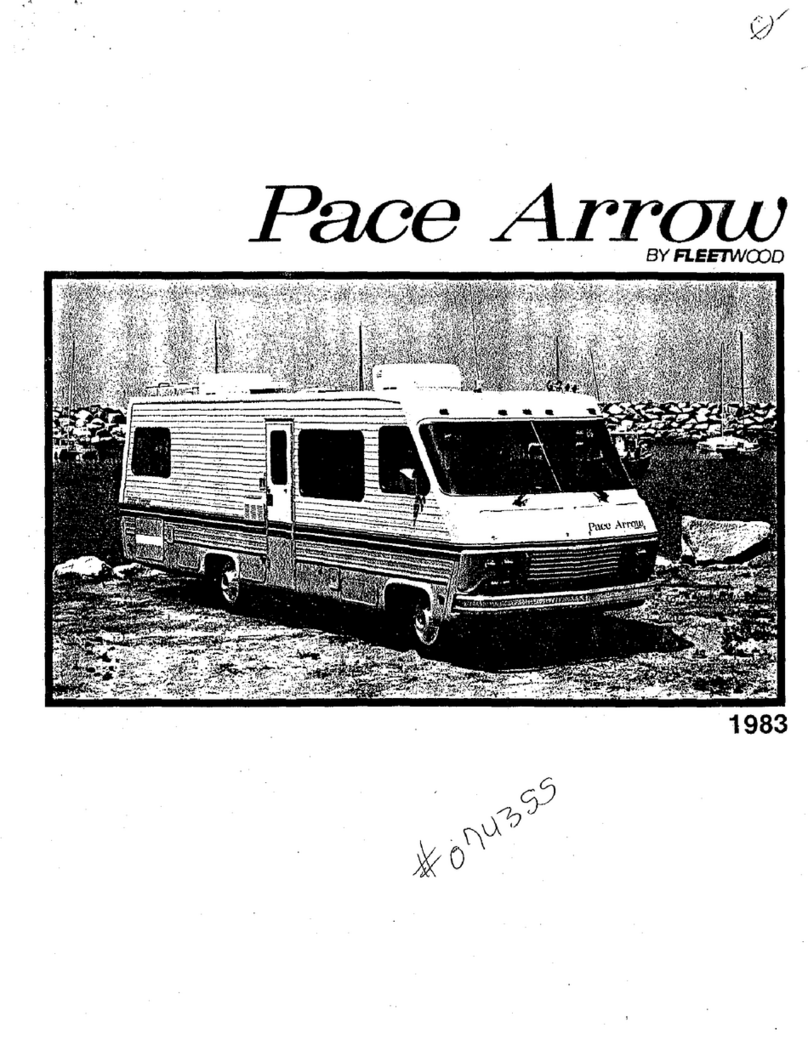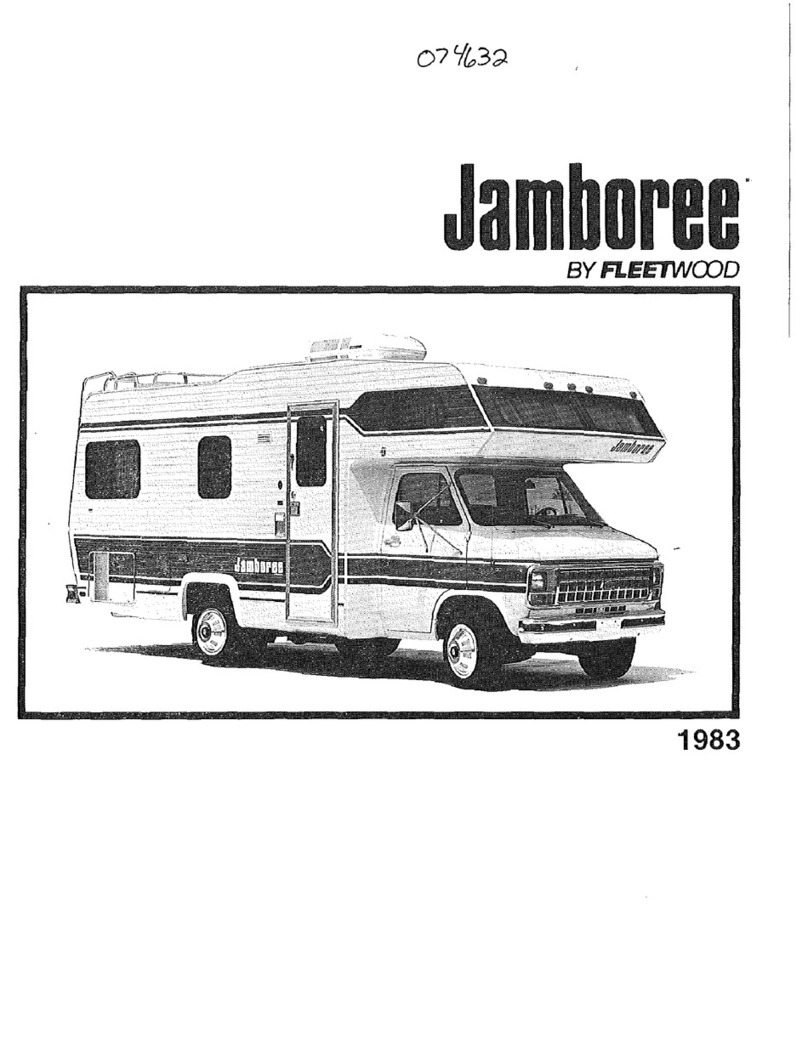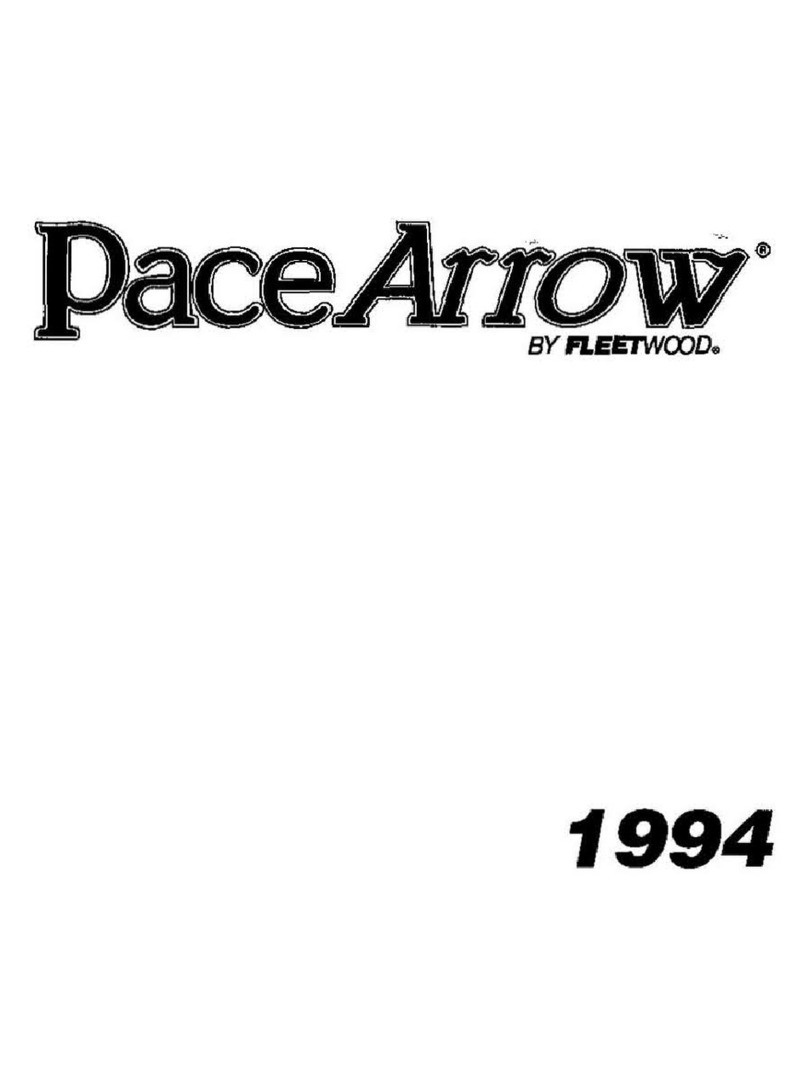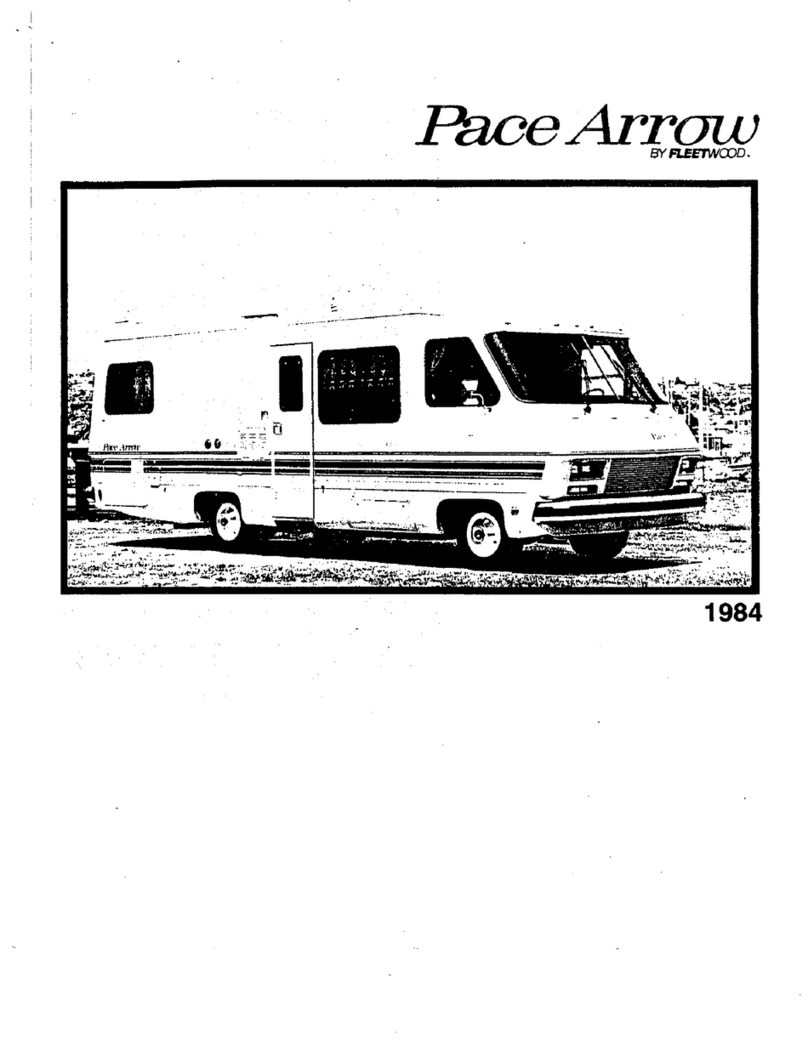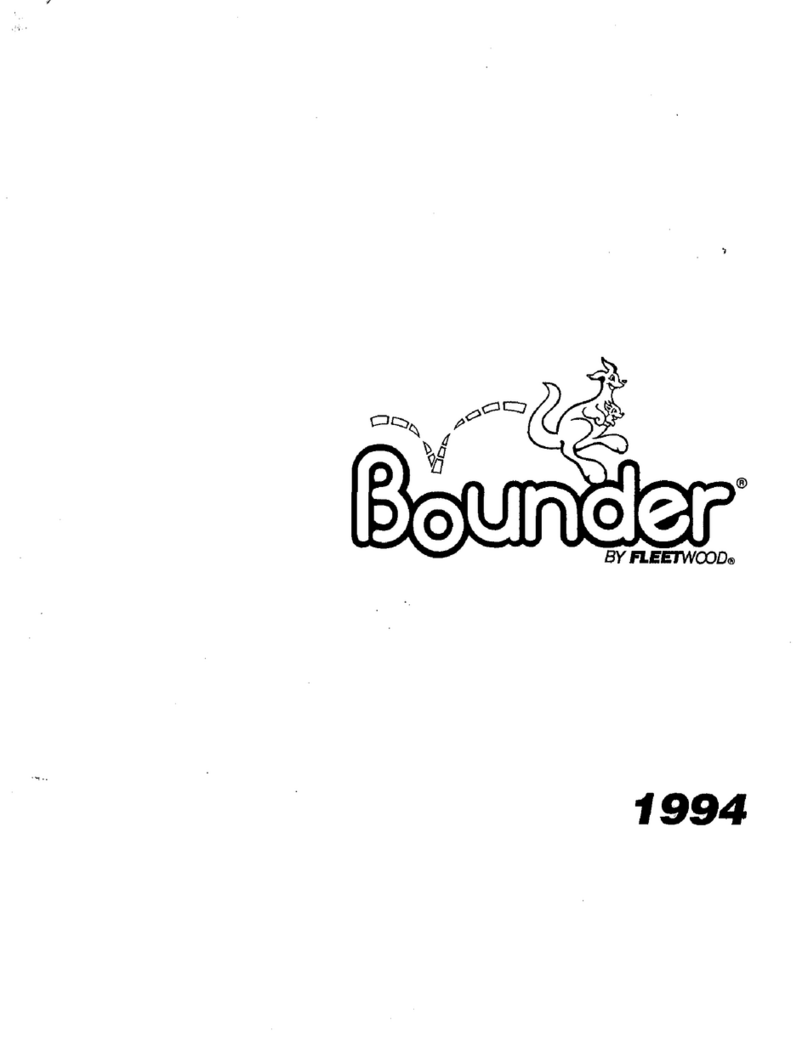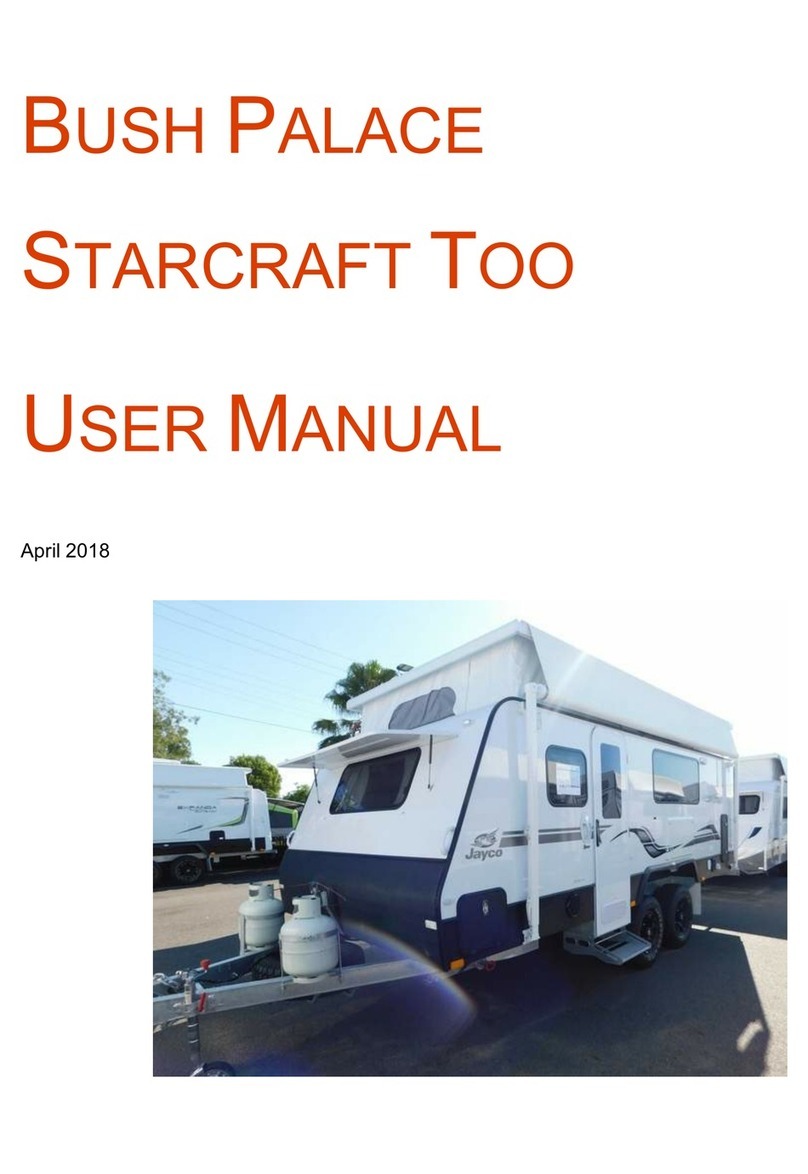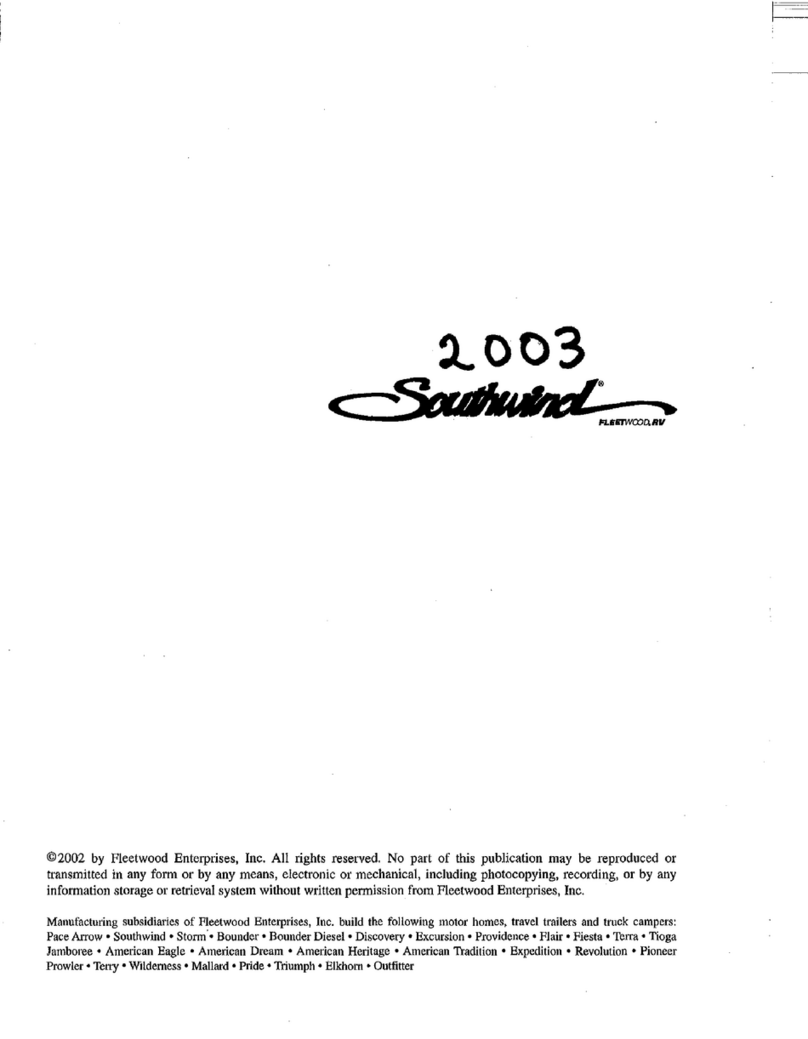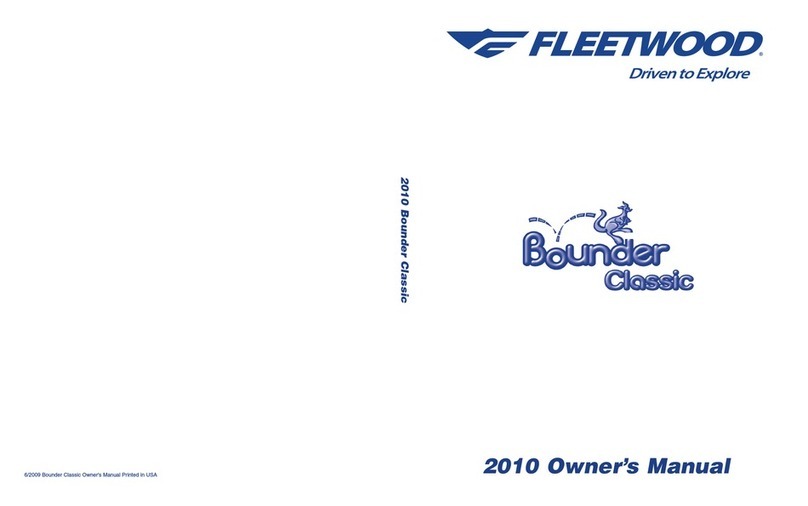carpeting, and drapes. Damage
or
deterioration
due
to
long term occupancy may
not
be con-
sidered normal, and may under the
terms
of
the
warranty, constitute misuse, abuse,
or
neglect,
and maytherefore reduce your warranty protec-
tion.
This manual contains a discussion
of
long
term
occupancy problems. Please refer
to
that
section before considering
t.hls
product
for
long
.
term
occupancy.
The'motor
home has been
thoroughly
inspected
before shipment.
YOUR
DEALER
IS
RESPONSiBLE
FOR.
PERFORMING A COMPLETE
PREDELIVERY
IN-
SPECTION
OF
THE CHASSIS AND ALL
MOTOR
HOME.
COMPONENTS AS SPECIFIED IN THE
PREDELIVERY CHECKLISTS SUPPLIED
BY
THE
MOTORHOME
MANUFACTURER
AND THE CHASSIS
MANUFACTURER.
YOU
SHOULD
RECEIVE
A
COpy
OF
THESE COMPLETED CHECKLISTS FROM
YOUR
DEALER WHEN
YOUR
MOTOR
HOME IS DELIVERED
TO
YOU.
AS A
PART
OF
THE
PREDELIVERY
INSPECTION
PRO-
CEDURE,
THE
DEALER
·IS
TO
ROAD TEST THE
MOTOR HOME. NOTING AND CORRECTING ANY
STEERING PROBLEMS BEFORE DELIVERY.
THEREFORE,
FLEETWOOD AND ITS SUBSIDIARIES
.WILL Nor
BE
RESPONSIBLE
FOR
FRONT
END
ALIGN-
MENT
AFTER
THIS
PREDELIVERY
INSPECTION IS
DONE.
PLANNING
AND
PREPARATION
Each year millions
of
Americans embark
on
trips
using some
type
of
recreational vehicle. Proper plan-
ning
of
your
trip
will
ensure a pleasurable experience.
A thorough knowledge
of
your
RV
is important
If
you
are going
to
get
the
most
out
of
the
convenience and
safety items builtInto your vehicle.
Be
as
familiar
with
Itas
you
are
with
your personal car
or
truck.
The
booklets included in your.
Owner's
Information
Package cover details
of
operation
for
the
major ap-
pliances and equipment built into your
motor
home
for
your comfort, convenience and safety. Later sec-
tions
in
this
manual
will
also explain
how
to
operate,
maintain, and service important components and
systems In your motor home.
LOADING
AND
WEIGHT DISTRIBUTION
Proper loading is one
of
the
most
important
con-
siderations when traveling in an
RV.
Your
motor
home
is
lluilt
to
safely carry a certain maxirnum load.
For
safety's
sake,
NEVER
OVERLOAD
THE
MOTOR
HOME.
This manual contains a detailed section
that
explains
proper loading and weighing
of
the
vehicle.
HAVE
IT
ALL UNDER CONTROL
Remember, your new motor home
isa
large vehi-
cle and requires different driving skills
than
a
passenger car. Later in this manual we'll outline some
tips on
how
to become familiar
with
the
handling
characteristics and driving techniques
that
you need
2
'.
to
know
to
be
a safe
motor
home driver.
Of
Course
don't
overlook the laws
of
your state or province
that'
govern driving a
motor
home.
Your
state or provincial
Motor
Vehicle Department can provide you
with
the
applicable vehicle codes
that
spell out your rights and
responsibilities as a
motor
home owner.
INSPECT
AND
MAINTAIN
Follow a consistent schedule of inspection and
maintenance
for
your
motor
home.
Your,
continuing
safety and comfort depend on it. This manual includes
a section outlining maintenance intervals. Adherence
to
these schedules
will
minimize the possibility
of
failure
of
any important system
or
part
of
your
motor
home. The time spentinspecting and maintaining your
motor
home
will
provide you
with
many years
of
recreational pleasure. '
THE OWNER'S INFORMATION PACKAGE
Owner's
Information Package
This package contains very valuable documents
about your
motor
home .and its components and
systems. This
Owner's
Manual is in this package.
Since this owner's.mimual does notcover every possi-
ble detail
of
equipment and options installed
on
or
in your
motor
home, there
are
booklets and instruc-
tional material in the package
that
will help you safe-
ly
operate, maintain and troubleshoot those items.
Be
sure you read all
this
information and understand the
safety and operating instructions included
in
the
package. Keep these references handy.
If
you ever
decide to sell
or
trade your
motor
home, be sure the
new
owner gets all
the
material in this package.
CHASSIS
AND
VEHICLE IDENTIFICATION
Your motor home
may
be
built on either the
Chevrolet
G30Cutaway
Van or the Ford
E350
Cutaway
Van
chassis. Several numbers are used
to
identifythe vehicle and components used on the vehi-
cle. The V.I.N. or Vehicle Identification Number is the
17-digit legal Identification
of
the completed vehicle
and is the number
on
the vehicle registration. The
.V.I.N. is found on the
left
top
of
the instrument panel,

